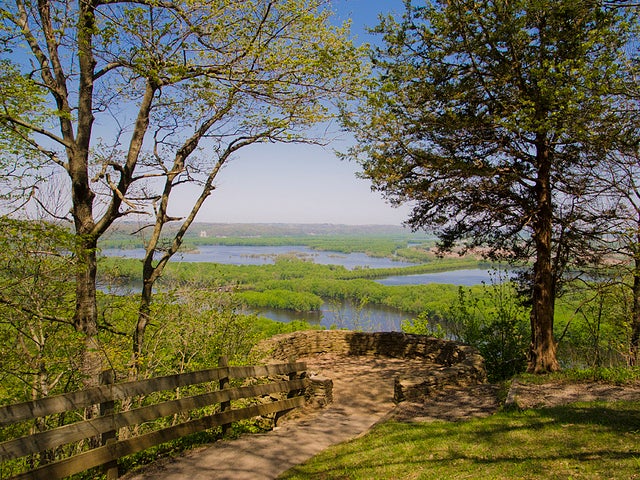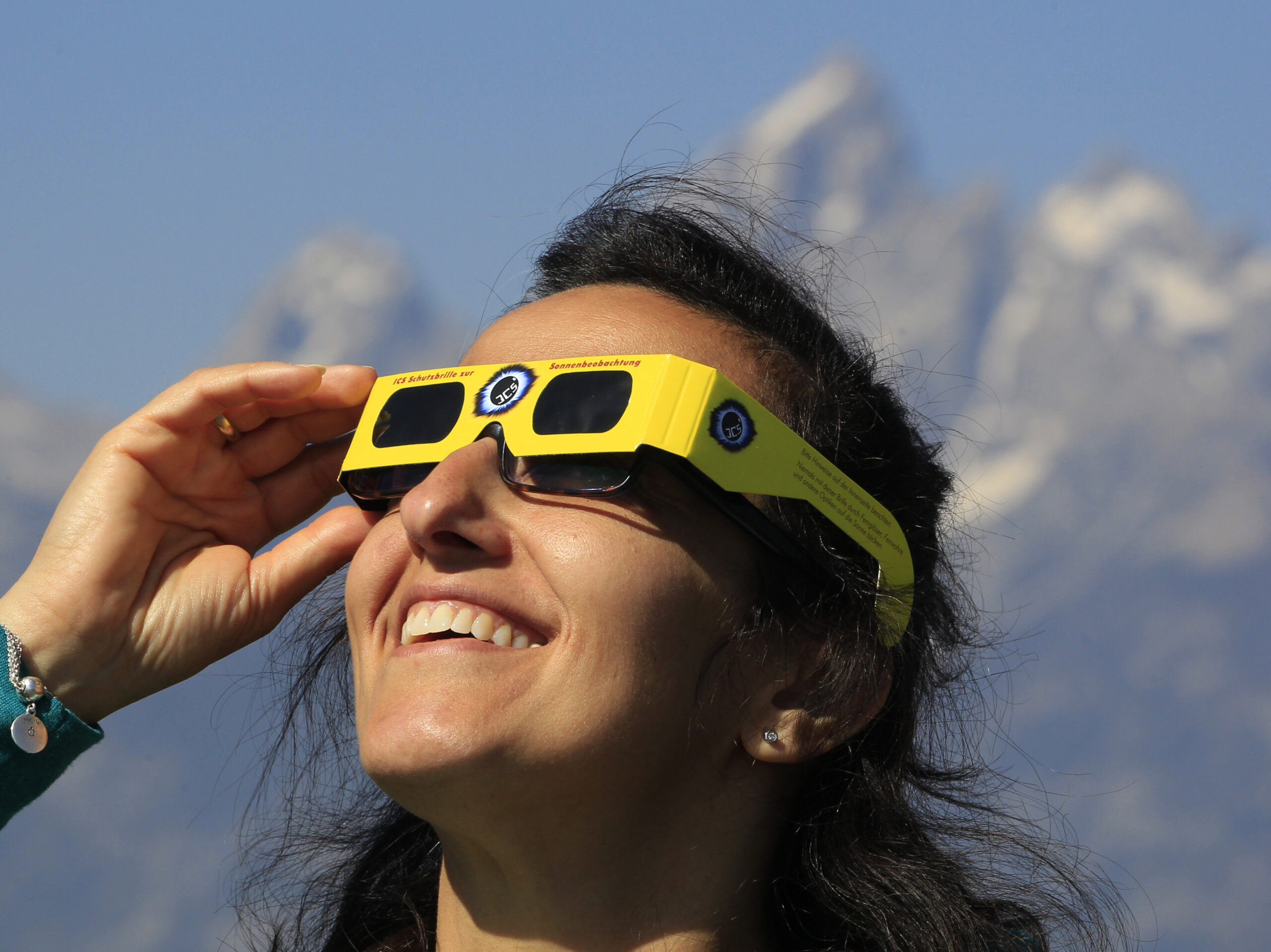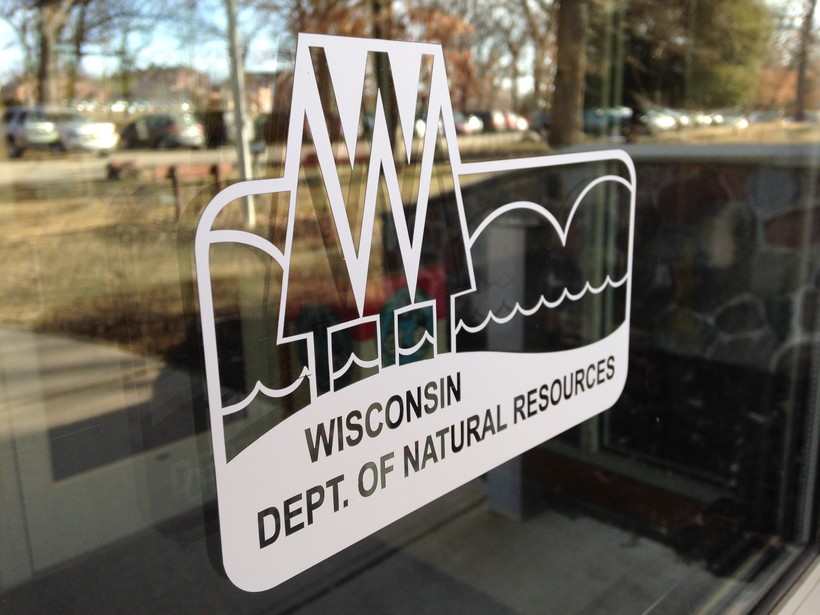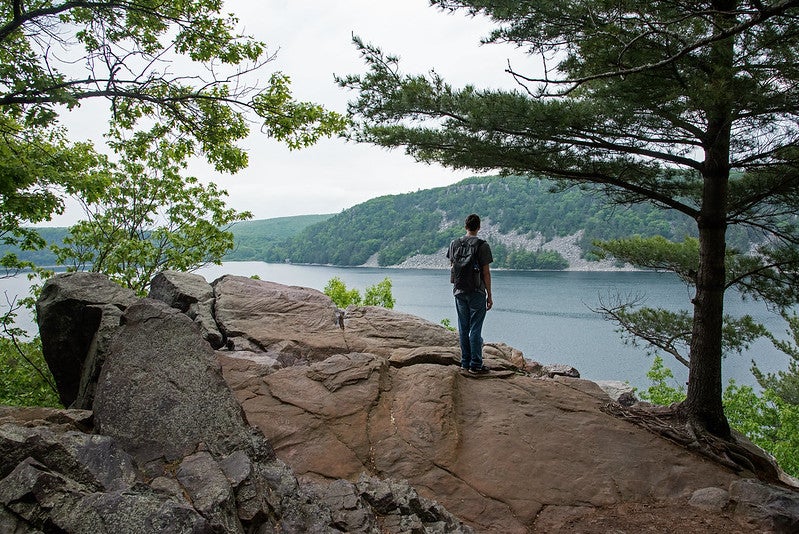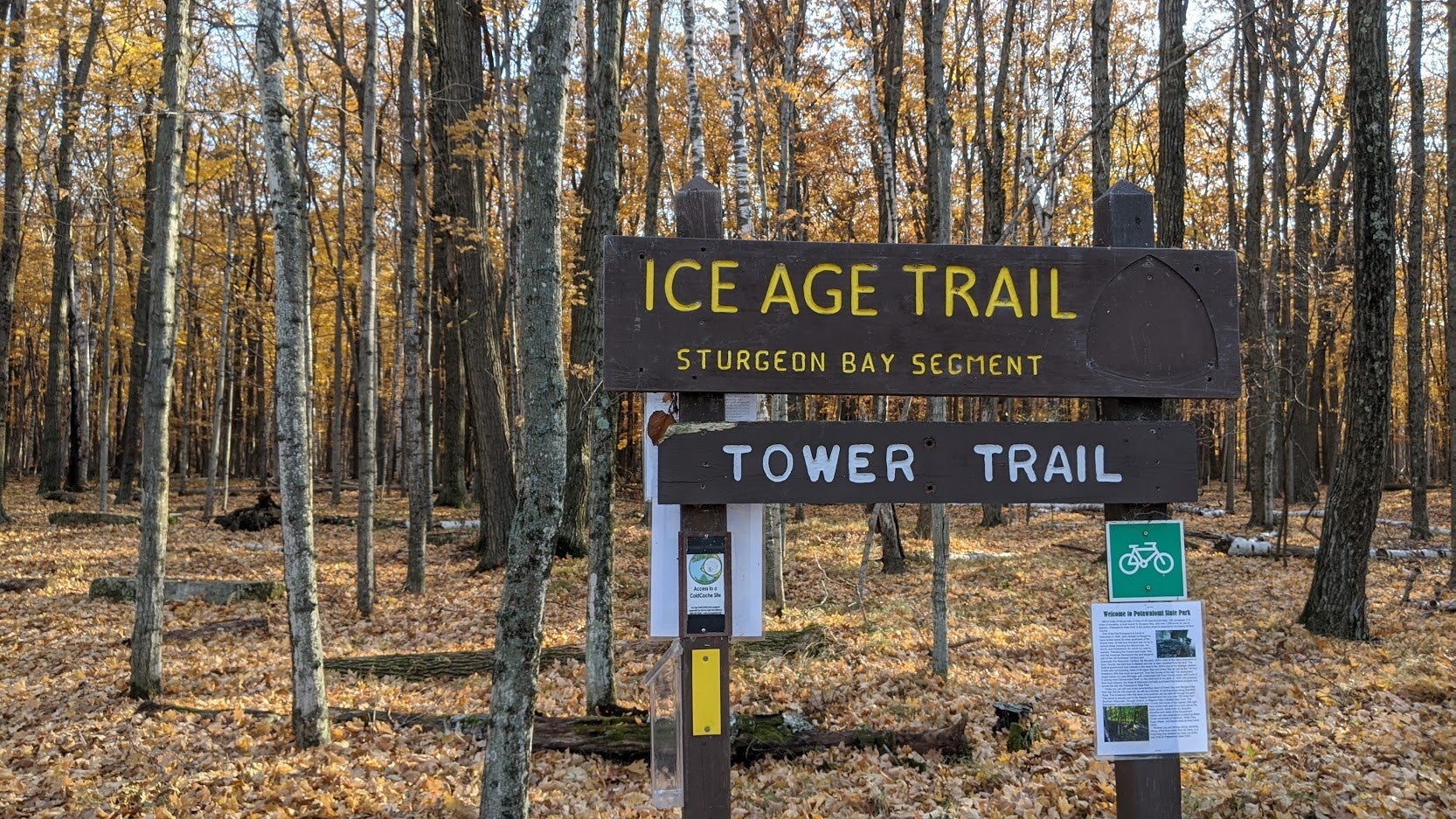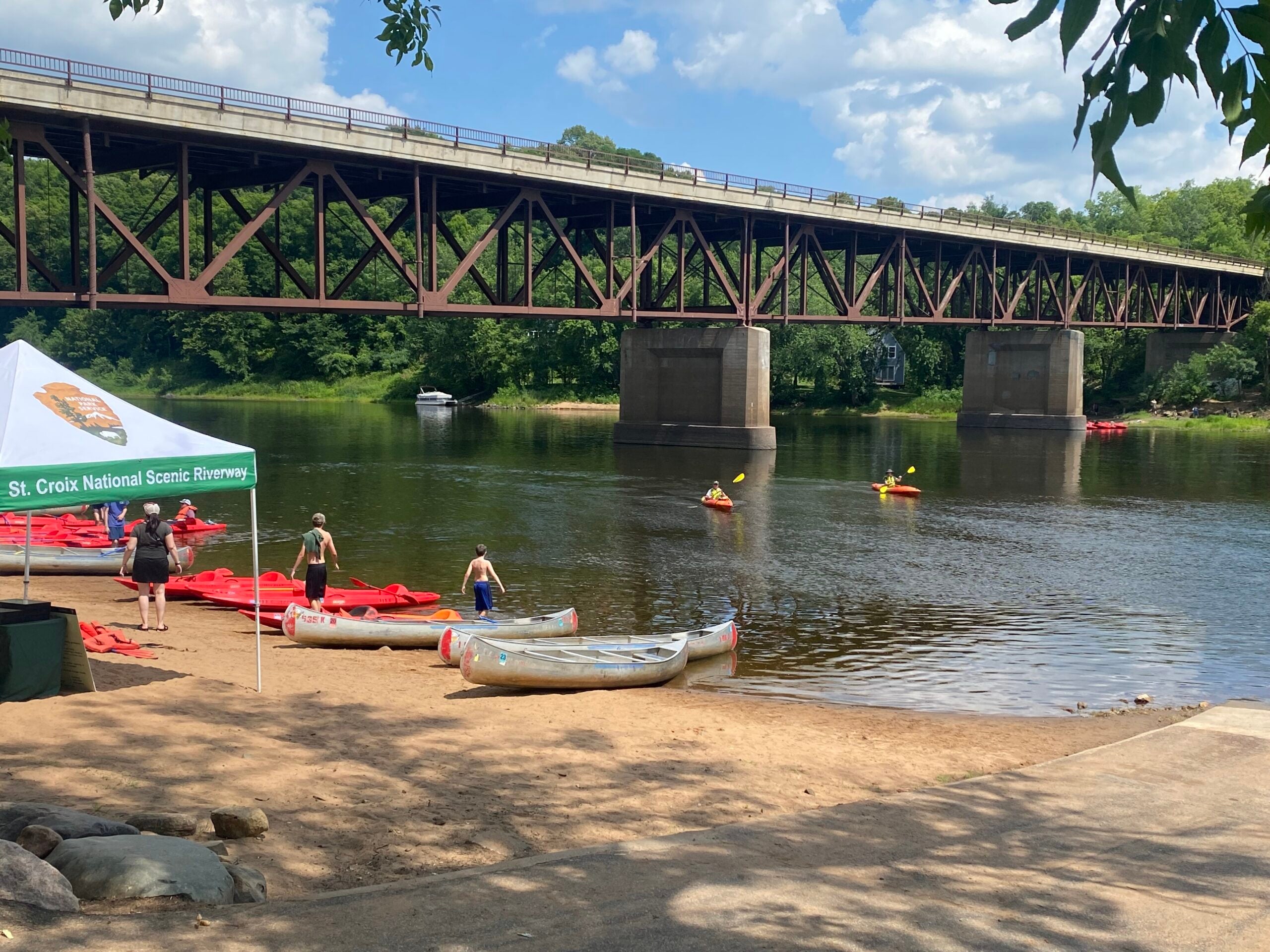During the brunt of the COVID-19 pandemic in 2020, 20.6 million people visited Wisconsin state parks and natural areas, according the state Department of Natural Resources. That’s about 3 million more than the previous year.
Missy VanLanduyt, the recreation partnerships section chief with the Wisconsin State Parks System, said this year is on track to beat 2020’s record, and so far the DNR has tracked a 25 percent increase in visitors from the same time in 2019.
As folks head out to the parks and natural areas, VanLanduyt said there are still restrictions on some amenities because of the pandemic. A few of the restrictions that were implemented last year have been lifted, though for the most part not much has changed.
Stay informed on the latest news
Sign up for WPR’s email newsletter.
VanLanduyt said restrooms are now open. The nature centers and office buildings are still closed, but VanLanduyt said standalone concession facilities are open at 50 percent occupancy.
Towers and playgrounds are also open as of April 30. And capacity has increased from 50 to 100 people for open-air shelters, outdoor group camps and amphitheaters.
One thing that hasn’t changed is the “Leave No Trace” mantra meant to remind visitors to be conscious of protecting the state’s natural resources.
There are seven principles established by the Leave No Trace Center for Outdoor Ethics for parks visitors to follow that help ensure protection of the landscape. VanLanduyt said these principles apply to every person recreating on public lands.
Those principles are: Plan ahead and prepare for your trip; travel and camp on durable surfaces; dispose properly of waste; leave rocks, sticks and other natural items where you found them; minimize the impact of campfires; respect wildlife and be considerate of other visitors.
VanLanduyt said a big problem is getting people to camp and park only in designated areas and to stay on the trails, which can be especially challenging when the trails are muddier during the spring.
“So many people are out and about, and they maybe don’t want to get their shoes dirty, so they go around the mud and actually that causes more damage,” she said, adding that foot traffic off the trails can damage habitat and plants and widen the trail, making it unstable and in need of more repair down the line.
She said proper disposal of trash was an issue last year, and she encourages visitors this year to use the vault toilets and bathrooms. Also, she said to make sure you pack out granola bar wrappers, water bottles and other trash.
Visitors might spot baby animals during springtime, but VanLanduyt warned to leave wildlife alone.
“I think many people don’t realize that the mothers or parents of those babies are out hunting or have distanced themselves from their babies to not attract predators,” she said. “Just let wildlife be wild and don’t feed it, don’t try to capture it, don’t take it anywhere.”
If you find an injured or baby animal, call a DNR conservation warden or a rescue center.
When it comes to being courteous of other visitors, VanLanduyt said most of the time you should yield to others, but if you’re traveling downhill on a trail, you should be the one yielding to the people who are coming up the trail. Try to social distance the best you can, she said, but it might help to wear a buff or have a mask in your pocket to put on when you don’t have enough room to move safely around others.
VanLunduyt said in the next few weeks, the DNR will post a graphic on its website showing where people can find “hidden gems” at state-run parks and natural areas. There also will be an opportunity for people to search by activity to find a park that fits their interests, whether it’s off-road biking, camping, hiking, kayaking or other activities.
Wisconsin Public Radio, © Copyright 2024, Board of Regents of the University of Wisconsin System and Wisconsin Educational Communications Board.

